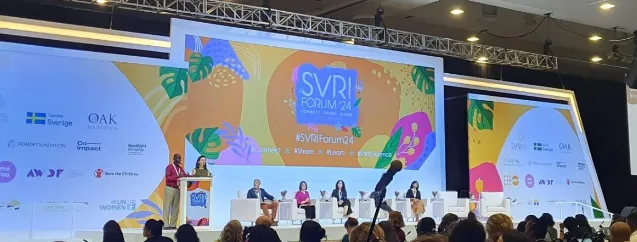Five ways in which digital is transforming training

MiiHealth’s approach broke new ground in many ways, from the use of ‘distributed simulation’ training to augment training during a humanitarian crisis, demonstrating how the intuitiveness and graphics of tablets could overcame traditional barriers of language and literacy; applying the science of pedagogy to accelerate and ensure the fidelity of learning; and the co-creation of the content with local, frontline teams using their smart phones to ensure that the experience was both accurate and authentic.
;

However, there were major challenges: the tech scepticism of operational agencies, short term humanitarian funding focussed on inputs rather than outcomes, and conservatism in the host countries making the point that a humanitarian crisis was not the time to be testing innovative ideas. All important points, and par for the course when it comes to humanitarian innovation. Looking forward, a social enterprise/impact investment driven approach may be more fruitful rather than relying on demand from NGOs and charitable grants. New ideas usually need new organisations to successfully incubate them; as well as longer term investment to explore different solutions and build momentum.
However, since the start of this project, the opportunities for building on this approach have grown: breakthroughs in the 360-image capture of working environments simplying the creation of fully immersive training experiences, and the used of big data for a more adaptive, personalised approach to training. The data opens the way for the use of artificial intelligence to identify critical points where the training needs to be reinforced, and to pinpoint how individual learners best learn.

To overcome some of the constraints on the humanitarian innovation ecosystem we explored other related applications, shifting the focus away from acute outbreaks to more slow burn crisis such as training for workers in hazardous environments to palliative care.
We also explored insights that have come from other sectors, particularly those with greater R&;D budgets and more adept at applying innovations in pedagogy and immersive environments.

Samsung, Oculus &; NASA have been developing a suite of products for capturing and experiencing immersive environments. Some examples include:
- The U.S. Army Edgewood Chemical Biological Center using virtual reality (VR) to train soldiers on a complex piece of detection equipment called the Husky Mounted Detection System, or HMDS. This tool detects underground explosives and anti-tank mines.
- The U.S. Air Force has used VR to simulate a medical transport from Bagram Airfield in Afghanistan to Landstuhl Regional Medical Center in Germany under the care of a Critical Care Air Transport Team, delivering (virtual) emergency medicine, while honing the critical care skills of physicians, nurses and respiratory therapists.
- British military recruiters are using VR as a recruiting tool, dropping potential recruits into virtual battlefield scenarios where they drive tanks and engage in live fire exercises.
- NASA planners are using VR to prepare astronauts for space walks. VR offers astronauts a chance to learn how to return to their spacecraft should they become untethered, while also offering lessons on how to control the space station’s robotic arm and manipulate payloads in zero gravity.
The budgets being spent in the defence sector dwarf anything available in the humanitarian or public health sector. This means that it is likely to be more viable to adapt existing approaches in other sectors for humanitarian needs rather than develop from scratch. The rewards of doing this could be substantial.
Immersive technologies offer important benefits for any organization whose employees depend on continuous training. Five major advantages they have are that they likely to be:
- Less Costly: Untethered mobile VR and augmented reality (AR) content reduces the down-time and cost associated with pulling trainees away from their stationed base, field or ship and transporting them to training facilities.
- More Efficient: On-demand training using headgear and sensors means more people can participate when they want to, and training can be delivered more rapidly.
- More Effective: Digital experiences are how millennials and Generation Y consume information and learn.
- More Relevant: VR, AR and mixed-reality training, using a blend of VR and AR, allows crews to learn about the vessel, plane, equipment or geography relevant to them.
- Less Risky: Fully-immersive, 360-degree environments offer very realistic experiences similar in many ways to live training, but without the risk.
Combined with artificial intelligence technologies that identify individual learning patterns, AR, VR and mixed-reality technologies are taking training to a more efficient and less costly level; having the potential to transform local capacity building in emergencies.
Stay updated
Sign up for our newsletter to receive regular updates on resources, news, and insights like this. Don’t miss out on important information that can help you stay informed and engaged.
Related articles



Explore Elrha
Learn more about our mission, the organisations we support, and the resources we provide to drive research and innovation in humanitarian response.